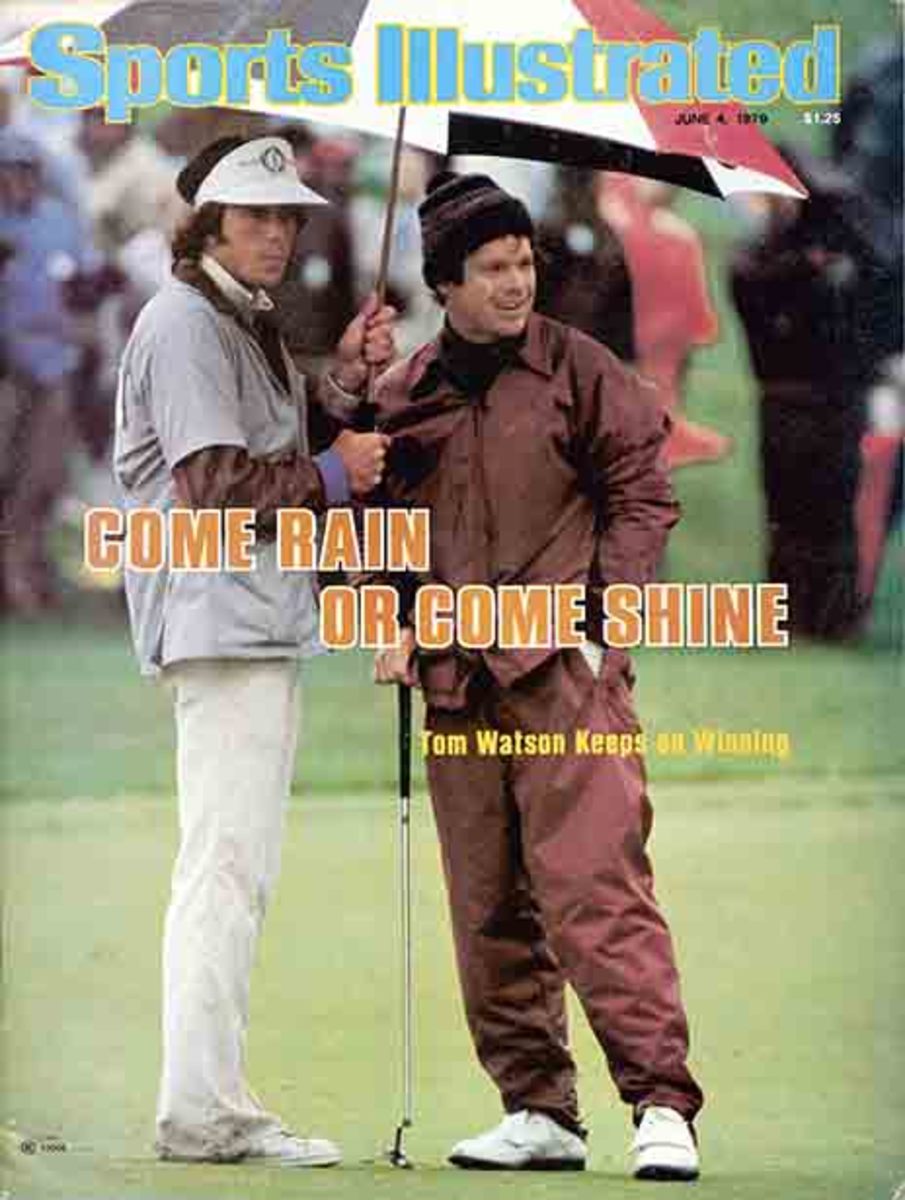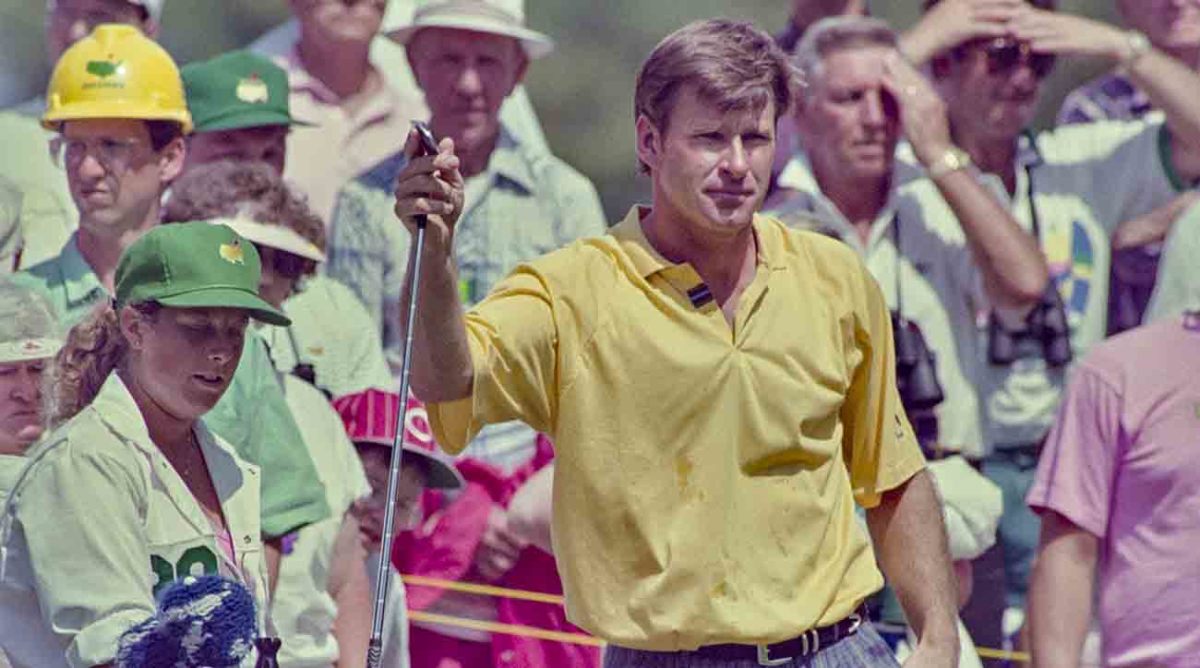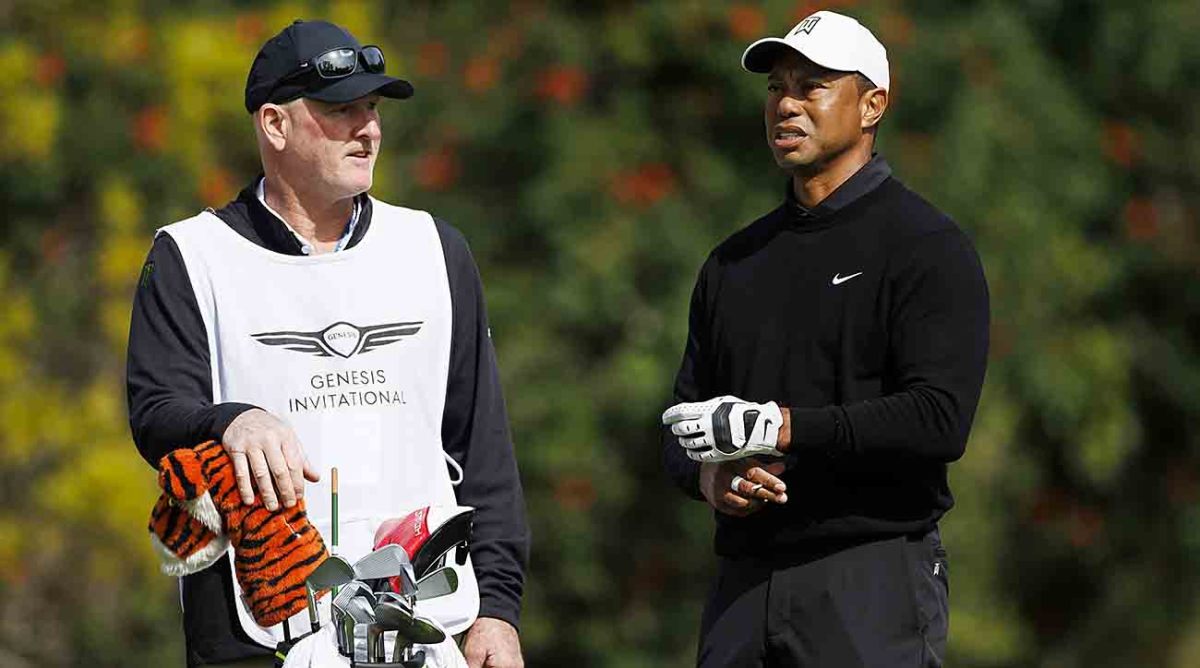Bones, Bruce, Fanny, Killer and Stevie: Ranking Golf's All-Time Colorful and Successful Caddies

Questions without answers:
Does the caddie make the player or does the player make the caddie?
Does the captain make the difference in the Ryder Cup or is it simply the players?
Could Batman hold off a dinosaur attack in a box canyon without his utility belt?
The Ranking thinks we all know the answer to that last oft-asked one. So let’s focus on question No. 1 about caddies.
When last call finally came for the caddie known as Last Call Lance last week, The Ranking pondered the possibility of measuring the greatest professional caddies of all time.
Well, that’s impossible. Only a player and his/her caddie know for sure how much difference the caddie made to his/here game. At The Ranking, we can count victories like anyone else (anyone else who uses beads, that is) but would Jack Nicklaus have won just as many majors with a robotic pull-cart or a well-trained simian? We’ll never know, at least not until “The Planet of the Apes” movie franchise gets around to golf. “Get your stinking paws off me you damn dirty ape-caddie!”
Lance ("Last Call Lance") Ten Broeck was a pretty good player, good enough to make more than 160 cuts on the PGA Tour. He later contended for a U.S. Senior Open title. Ten Broeck, a Chicago native, also had a pretty good second act as a tour caddie. He was popular with media types, players, other caddies and assorted bartenders across America. He was 67 when he passed away.
Where Last Call Lance ranks among the greats is for his contemporaries to determine. He lived in an era when some caddies, if they looped for a big name, had a big-enough personality or had a media buddy, could become a golf household name.
The men who came before, who knows, maybe they were among the greatest ever. William (Pappy) Stokes won five Masters titles working for four different players (including Ben Hogan), a feat unmatched. And Willie Peterson, the caddie who leaped into the air when Jack Nicklaus drained that killer putt across the 16th green in the 1975 Masters on Sunday, was on the bag for five of The Bear’s six Masters wins. He’d have his own merchandise line and YouTube channel in this era.
Times change. Yesterday’s caddies with colorful nicknames such as Burnt Biscuits, Golf Ball, Dump Truck, Disco, Pepsi, Cubby and Akron Trash, to name a few, have been replaced with hard-studying craftsmen and craftswomen who sometimes have apparel deals and score TV gigs.
Thanks to increased golf coverage and the Internet Age, caddies have never had bigger public profiles—if they want. In honor of Last Call Lance, The Ranking won’t presume to rank the best caddies by skill or wins or Red Roof Inn points. Instead, here are some modern caddies who are so well remembered by American golf fans, no last names are necessary …
Tip
Arnold Palmer’s official British Open caddie James Anderson, better known as "Tip," was hired to work the 1960 Open at St. Andrews, where Palmer reinvigorated American interest in the Open. Anderson was a St. Andrews original. He won the St. Andrews Boys Championship there and later decided to caddie for life. Tip helped Palmer win the ’61 Open at Royal Birkdale, the ’62 Open at Royal Troon and caddied for him in Opens until 1990. Tip checked out in 2004 at 71. “I hope Tip had one last beverage the day he passed away,” Palmer said of his friend. “That would have been most appropriate.”
Angelo
It was always easy to spot Angelo Argea. One, he worked for Jack Nicklaus during the Golden Bear’s dominant era. Two, he was known for his Afro hairstyle, all the more distinctive when it grayed. Three, he usually had a cigarette dangling out of his mouth, Argea was born in Greece, first caddied for Nicklaus in the 1963 Palm Springs Classic and was there for 44 of Jack’s wins over the next two decades. Despite his high profile, Argea didn’t do much for Nicklaus on the course other than carry the bag, clean the clubs and keep fans in line, but that was all the help Nicklaus wanted. Or as Nicklaus once joked, “Essentially, Angelo has been retired since he was 21.”
Carl
He was already the best caddie at Augusta National (and always on call for Masters chairman Jack Stephens) when he was finally paired with Ben Crenshaw at the Masters. Then Carl Jackson won a pair of Masters with Gentle Ben, most famously in 1995 when Crenshaw tapped in a short putt for the victory and collapsed in tears on the final green, falling into Jackson’s supportive arms. A true Augusta legend.
Alfie
The club of caddies who won the same major title with the same player five times is small. England’s Alfie Fyles was in that club. He was a veteran looper at England’s Royal Birkdale and became Tom Watson’s designated Open Championship caddie. Fyles worked all five of Watson’s Open wins. At the 1977 Open at Turnberry in the famed duel with Nicklaus, Watson wanted to hit 6-iron for his approach to the final green. Fyles insisted on a 7-iron, which Watson stuck to two feet.
Killer
Sam Foy, a.k.a. "Killer," was a long-time caddie for Hale Irwin, who made a habit of winning U.S. Opens—three of them. Killer, as he preferred to be called, began his caddie career at the old Houston Country Club, snagging 75 cents for a nine-hole loop. He accounted for 37 wins with a variety of players, including Bob Rosburg, and was with Irwin when he won a U.S. Open at Inverness. He got his nickname from a stint as a professional boxer because for a man small in stature, he packed a powerful punch.
Bruce

Lou Gehrig’s Disease claimed Bruce Edwards much too soon—he was only 49 at the time of his death in 2004. But his impact as one of the game’s top caddies was unquestioned. He started with a young Tom Watson in the early 1970s and enjoyed Watson’s long run of wins through 1989. After a few seasons working for Greg Norman, Edwards rejoined Watson and battled together until the end. How remarkable was Edwards? Author John Feinstein wrote a book about him. What caddies get that treatment? Only special ones. (Not you, Bagger Vance.)
Herman
Lee Trevino treated Herman Mitchell more like a brother than a caddie. Herman, a heavyset man who was a frequent punchline of Trevino’s quips and laughed harder at them than anyone, worked as his caddie for 19 years and all six of Trevino’s major championships. “He’s better to me than I am to myself,” Mitchell said. Herman had weight-control issues and heart problems in the mid-‘90s and had to quit caddying. Trevino made sure Herman was covered financially until his ex-caddie’s death in 2004.
Fanny

The pride of Gothenburg, Sweden, Fanny Sunesson became the first female caddie on the bag for a major championship during her nine-year run with Nick Faldo. She got her start on the European Tour working for Howard Clark before connecting with Faldo. She later worked for Sergio Garcia, Fred Funk and Notah Begay. Sunesson, 55, retired in 2012 and does some golf commentating work for Swedish TV these days.
Bones
The nickname "Bones" stuck because Fred Couples couldn’t remember Jim Mackay’s name and it fit because he was a lean 6 feet, 4 inches tall. Bones spent 25 years caddying for Phil Mickelson and was on the bag for five of Mickelson’s six major championships. He is known as a prolific worker and it wasn’t unusual to spot him walking the course before an appointed competitive round. He played golf for Columbus (Ga.) College and got his start on tour caddying for Larry Mize (an Augusta native), Scott Simpson and Curtis Strange. He quit caddying in 2017 in favor of a gig as a commentator for NBC and instantly became one of the most insightful on-course reporters in TV history. In 2021, he returned to his roots and started caddying for Justin Thomas. Together, they made a remarkable final-round comeback to beat Will Zalatoris in a playoff to win the PGA Championship last year at Southern Hills.
Joey

There’s only one “Joey” on the PGA Tour and it’s Joe LaCava, a Connecticut native who’s a 40-year caddie veteran. LaCava’s serene style was a perfect fit for easygoing Fred Couples, who won the 1992 Masters with Joey, as Fred dubbed him, on the bag. When Couples cut back on his schedule, he urged LaCava to take an open job with Dustin Johnson, a regular winner. In 2011, Tiger Woods called looking for a replacement for Steve Williams, and LaCava was thrust into Tiger’s inner circle. LaCava was there when Woods won the 2019 Masters, his 15th major title. Joey has had an amazing run and with Woods limited by injuries, he just signed on last week to work for Patrick Cantlay.
Fluff
One sure way to become famous is to caddie for Tiger Woods. Mike (Fluff) Cowan was already a tour regular before Tiger, having worked for Peter Jacobsen for 18 years. He spent four years with Woods, including Tiger’s first major at the 1997 Masters, and was let go in early 1999, not long after he landed his own TV commercial for a hotel chain. Cowan caught on with Jim Furyk, who won the 2003 U.S. Open, and eventually followed him to the senior circuit, where Furyk added the 2021 U.S. Senior Open. Cowan is known for his laid-back look and mustache, which has drawn comparisons to the Grateful Dead, and his longevity. He caddied in 11 Ryder Cups.
Stevie
The Mount Rushmore of Caddies has to include New Zealand native Steve (Stevie) Williams. No caddie ever had better results. Williams can claim more than 150 wins during a superlative career in which he worked for Adam Scott, Raymond Floyd, Peter Thomson, Greg Norman and, oh yeah, Woods. Williams was on the job for 13 of Tiger’s 15 major victories and carried for Scott when he became the first Australian to win a Masters, a huge moment of national pride for those Down Under.
Williams wasn’t warm and fuzzy with the media—that wasn’t his job. As Tiger’s caddie, in addition to his golf duties, he was effectively Tiger’s bouncer and bodyguard and he did it with such ruthless efficiency that once, when Williams barked at TV foot-soldier David Feherty for daring to get close enough for a peek at Tiger’s lie in the rough, Feherty responded, “Could you just take a 30-second break from being an a------?” Or something like that. Williams also relished planting Tiger’s big staff bag, with “Tiger Woods” in large letters, as near as possible to the tee markers in a transparent effort to increase the intimidation factor for the other members in Tiger’s pairing. Woods loved seeing that, too.
